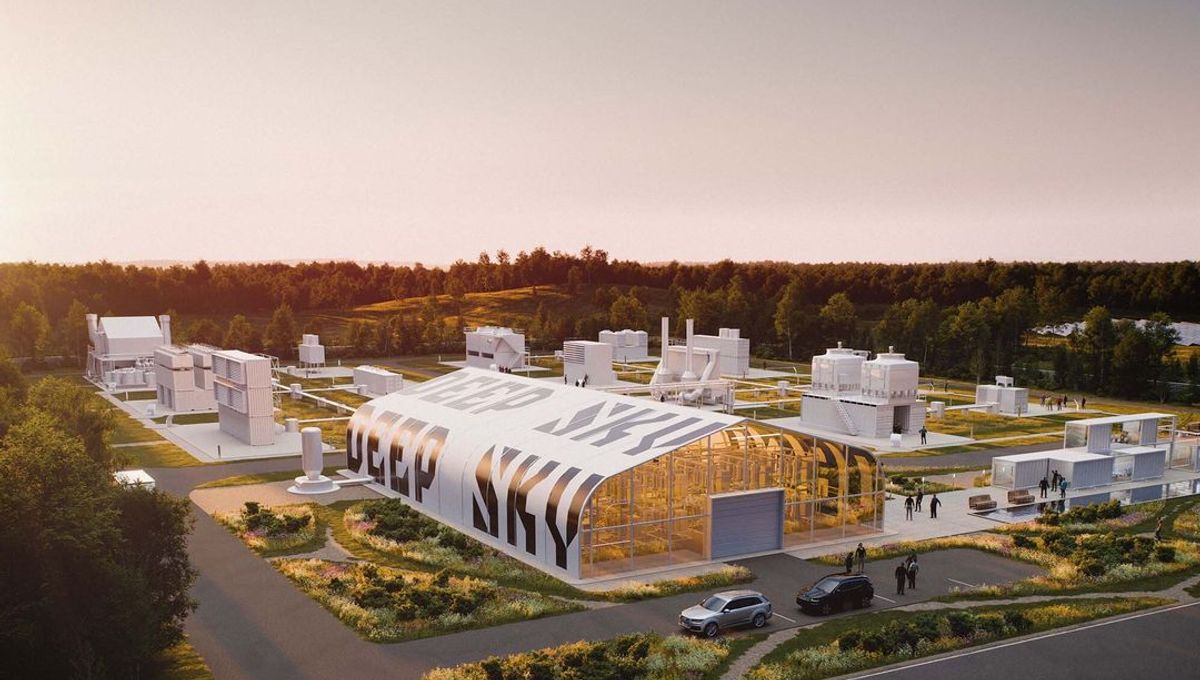
Canadian carbon removal company Deep Sky has announced plans to build the world’s first carbon removal innovation and commercialization center. It’s set to be built in Innisfail, a town about an hour north of Calgary, Alberta.
The quest for net zero needs to be fought on many fronts. You have your vanguard offense: simply reducing the carbon footprint of the things we already do. Then there’s the field medics: tactics like planting more trees and restoring peatlands – not to mention just protecting the ones we already have. But what if we could add another line of attack?
Well, with this announcement from Deep Sky, we might soon be doing precisely that. They claim that the center will have the capacity to capture 3,000 tons of CO2 per year. Now, to be fair, that’s not really that much – it’s enough to offset the annual carbon footprint of about 227 individual Canadians, or 218 USians – but the firm is keen to stress that this is only the beginning.
“This project represents a world first,” Deep Sky CEO Damien Steel said in a statement on the company’s blog, “and serves as a testing ground from which the nascent industry can grow into Canada’s multi-trillion-dollar enterprise.”
The company plans for the facility to not only act as a carbon capture center, but also as a place for new ideas and future tech to be developed. “Labs makes it possible for many different Direct Air Capture (DAC) concepts to be tested simultaneously,” the statement notes, explaining that this technique should solve “the delivery delays that have plagued past global carbon removal projects.”
Eight different DAC technologies are already slated to be deployed at the center, which is expected to be operational before the end of next year. Currently, that still leaves space for two more potential carbon-capture technologies: “Labs is purpose-built with space for 10 different DAC technologies,” the statement confirms, “with room to expand.”
The company’s mission, it says, includes the goal of producing “high integrity carbon credits” – a global scheme that has come under fire recently after investigations discovered that more than 90 percent of certain types of carbon credits are completely worthless. In fact, they likely make the problem of industrial carbon emissions worse.
Part of the reason for that is the inability to prove – or even reasonably estimate – how effective emission reduction methods actually are. “The big problem with these projects is setting the baseline. When you measure the impact of your project, what are you comparing it to?” Gilles Dufrasne, global carbon markets lead at the independent watchdog Carbon Market Watch, told Carbon Brief.
“You’re comparing it to what would have happened in the absence of your project,” he explained. “That counterfactual is quite difficult.”
In that respect, however, Deep Sky has an advantage. “Carbon removal credits produced by Deep Sky projects are traced end-to-end with digital Measurement, Reporting and Verification (MRV),” the statement points out, “and are validated against the most rigorous carbon standards to ensure complete additionality and durability.”
All of this means that, while it may be a small first step in terms of raw volume, the facility “represents a giant step forward for the health of our planet and our economy,” according to Steel.
“I cannot overstate the significance of the world’s first carbon removal innovation and commercialization center, and what this means for Canada and our planet at large,” he said.
“Prioritizing quality and speed, we’re proud that this facility went from concept to construction in less than a year.”
Source Link: World First Carbon Capture Facility Could Remove 3,000 Tons Of CO2 From Air Annually